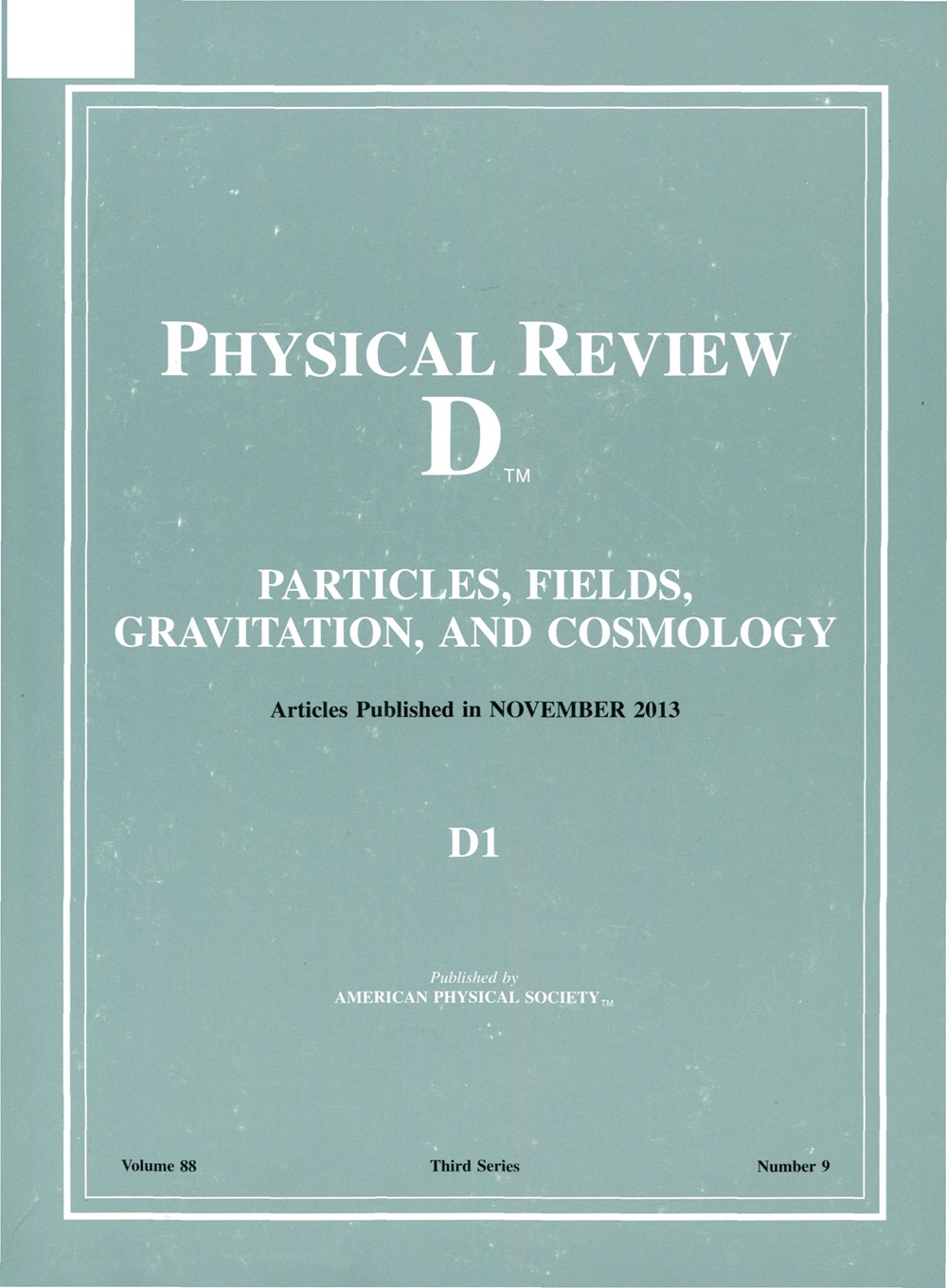世界表非线性σ模型突现对偶全息中RG流的单调性
IF 5.3
2区 物理与天体物理
Q1 Physics and Astronomy
引用次数: 0
摘要
基于世界表玻色子弦理论的重整化群(RG)流,构造了一个识别RG尺度和突现额外维的目标空间理论的有效全息对偶描述。这就产生了一个有效的膨胀-重力规范理论,类似于玻色子M理论的低能量描述。我们论证了这种全息对偶有效场论在α′展开中是非微扰的,其中一类弦量子涨落恢复到所有阶。为了研究目标空间度量的RG流在紧急时空中的单调性,我们考虑了RG流的熵产生。基于全息对偶有效场论的概率分布函数,构造了一个微观熵泛函,称为吉布斯型熵或香农型熵。考虑到二维非线性sigma模型的Ricci流表示目标空间度量的1环RG流方程,在Perelman证明Ricci流单调性的基础上,提出了全息对偶有效场理论的Perelman熵泛函。该熵泛函在α′展开中也是非微扰的,因此,将1环的结果推广到全环阶。利用Hamilton-Jacobi方程与局部RG方程的等价性,提出全息Perelman熵泛函的RG流为Weyl异常。这最终重申了RG流在紧急目标时空的单调性,但以非摄动的方式。有趣的是,我们发现微观熵产生率可以通过对沿流的所有可能度量构型的全息佩雷尔曼熵函数的变化率进行积分来确定。2025年由美国物理学会出版本文章由计算机程序翻译,如有差异,请以英文原文为准。
Monotonicity of the RG flow in an emergent dual holography of a worldsheet nonlinear σ model
Based on the renormalization group (RG) flow of worldsheet bosonic string theory, we construct an effective holographic dual description of the target space theory identifying the RG scale with the emergent extra dimension. This results in an effective dilaton-gravity-gauge theory, analogous to the low-energy description of bosonic M theory. We argue that this holographic dual effective field theory is nonperturbative in the α′ expansion, where a class of string quantum fluctuations are resummed to all orders. To investigate the monotonicity of the RG flow of the target space metric in the emergent spacetime, we consider entropy production along the RG flow. We construct a microscopic entropy functional based on the probability distribution function of the holographic dual effective field theory, regarded as Gibbs- or Shannon-type entropy. Given that the Ricci flow represents the 1-loop RG flow equation of the target space metric for the 2D nonlinear sigma model, and motivated by Perelman’s proof of the monotonicity of Ricci flow, we propose a Perelman’s entropy functional for the holographic dual effective field theory. This entropy functional is also nonperturbative in the α ′ Published by the American Physical Society 2025
求助全文
通过发布文献求助,成功后即可免费获取论文全文。
去求助
来源期刊

Physical Review D
物理-天文与天体物理
CiteScore
9.20
自引率
36.00%
发文量
0
审稿时长
2 months
期刊介绍:
Physical Review D (PRD) is a leading journal in elementary particle physics, field theory, gravitation, and cosmology and is one of the top-cited journals in high-energy physics.
PRD covers experimental and theoretical results in all aspects of particle physics, field theory, gravitation and cosmology, including:
Particle physics experiments,
Electroweak interactions,
Strong interactions,
Lattice field theories, lattice QCD,
Beyond the standard model physics,
Phenomenological aspects of field theory, general methods,
Gravity, cosmology, cosmic rays,
Astrophysics and astroparticle physics,
General relativity,
Formal aspects of field theory, field theory in curved space,
String theory, quantum gravity, gauge/gravity duality.
 求助内容:
求助内容: 应助结果提醒方式:
应助结果提醒方式:


